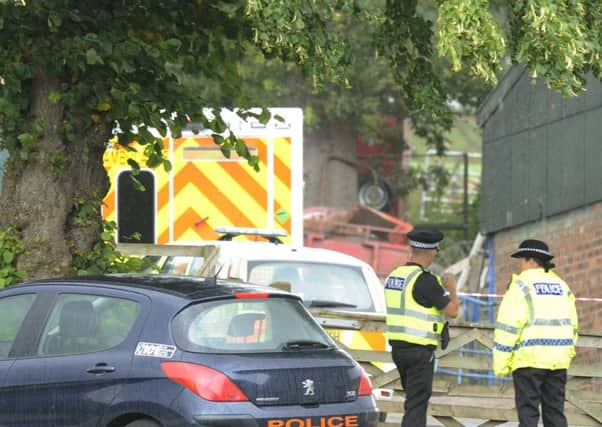Figures reveal 33 deaths across farming sector last year


The Health & Safety Executive (HSE) has published figures which showed that 4 per cent of those working in farming, fishing and forestry in GB sustained a work-related injury in the past year and another 4 per cent claimed they suffered an illness linked to their work.
On a GB basis, these figures amount to 13,000 individual cases and the percentages continue to be significantly higher than in other occupations, according to the HSE.
Advertisement
Hide AdAdvertisement
Hide AdAt the extreme end of the scale, there were 33 fatalities last year with the majority of deaths coming from being hit by moving vehicle, falls from heights, injuries caused by animals and contact with machinery.
The statistics make working life in farming, forestry and fishing six times more dangerous than working in the construction industry and 20 times the figures across all industries.
Even in non-fatal accidents, those involved in farming are more than twice as likely to have an accident than those working in other industries.
The countrywide economic cost of accidents in the past year has been estimated by HSE as somewhere between £118 million and £231m; this cost being accumulated between the individuals, employers and government.
After seeing the figures, released at the Livestock Event outside Birmingham, NFU Scotland president Allan Bowie commented: “One death on Scotland’s farms and crofts is one too many and many of us have witnessed first-hand the heartbreak and devastation this can cause.
“Agriculture has one of the poorest records for accidents of any occupation, and although these statistics released today reveal that the numbers of fatalities for the UK as a whole have reduced year on year, for Scotland they have reduced by just one death. We still have a lot of work to do yet to change the attitudes of our farmers.”
“The stark reality is that we need a change of behaviour and attitude – those working within the industry are not invincible and we know accidents do happen. Until farmers, crofters and those working with the industry realise that, then we will continue to see heartbreak on farms across the country.
“Farming is unique from other occupations – we tend to have a number of family members from various generations working together. It is all too easy to take a shortcut, and when something goes wrong it can have a life-changing impact on family, friends and the business.”
‘It took me months to recover’
Advertisement
Hide AdAdvertisement
Hide AdAs part of their drive to make farming safer, the union is one of the sponsors of Farm Safety Week 2016, which is running throughout this week. Under the question of “who will fill my boots?” the union is highlighting individual incidents such as listing how Morag Kilpatrick of Ayrshire was injured.
She was assisting with the last few cows in the rotary parlour on the family farm. As she was putting the penultimate cow into the race, the last cow decided to skip the queue. Without warning, the cow suddenly pushed passed her, crushing her against a metal rail and leaving her with a broken shoulder, ribs, and a pelvis broken in three places.
“She was an old cow, and was just standing chewing cud. There was nothing to make me think that she was going to charge forward. I was bed-ridden in the high dependency unit for ten days and spent 17 days in total in hospital.
“I then had Hydropool therapy for three months as my left arm had restricted movement. During that time I was unable to work and we had to take on extra assistance to help out, but the family and workers just had to cope. I had to set my mind on getting better rather than worry about that.”
Following the accident it took Morag some time to get back to normal and it has made her, understandably, more cautious of being around cattle.
She explains: “Since the accident, everyone is more protective of me when I’m working on the farm. It has made me more nervous about being amongst cattle, and I do take a lot of extra care. I can’t do some of the things I used to. It took me three months to drive and start to do everyday tasks like get the newspapers from the shop.
“I like to think I am a positive person, and it was one of those things you just had to get on with. I count my blessings it wasn’t worse.”
